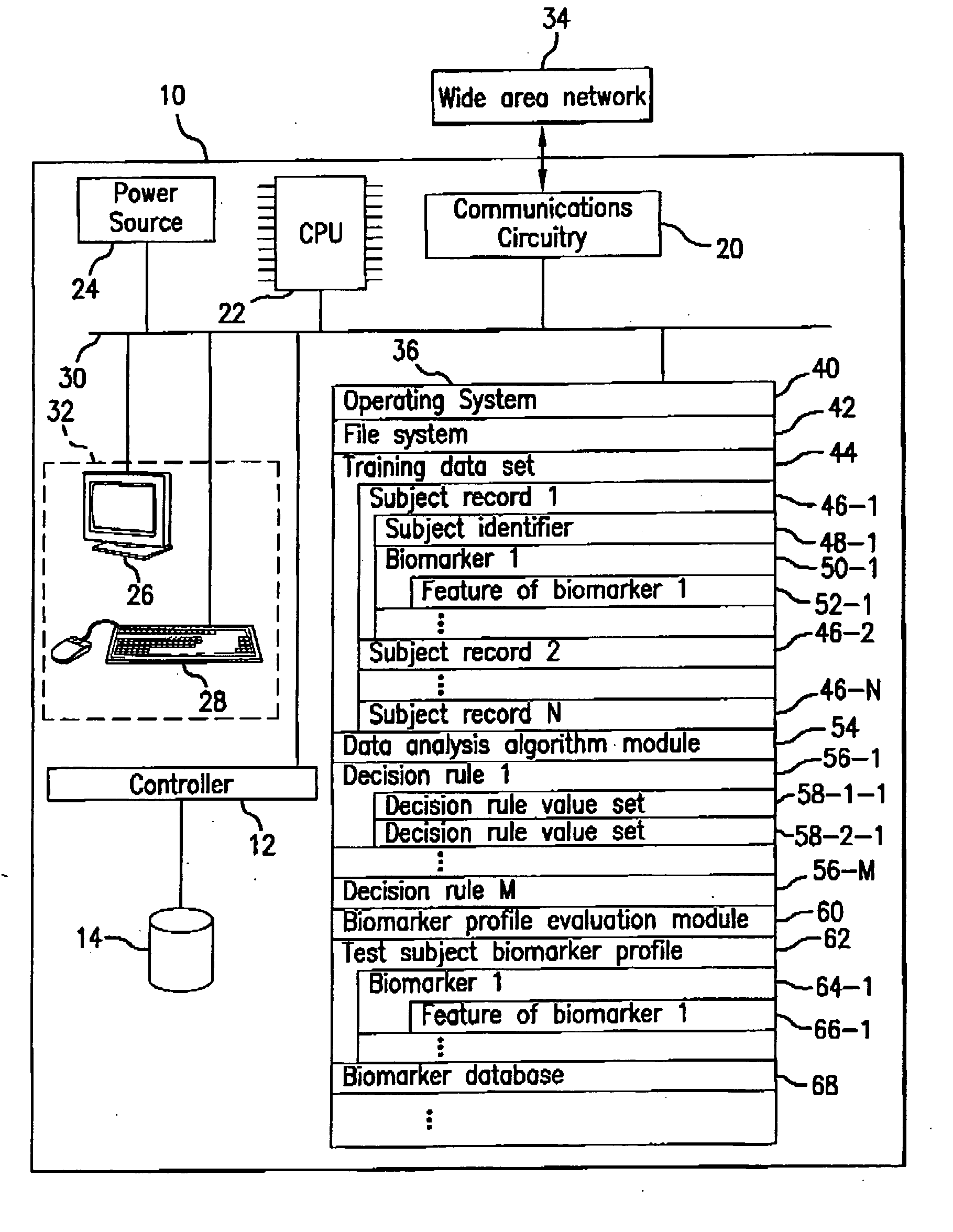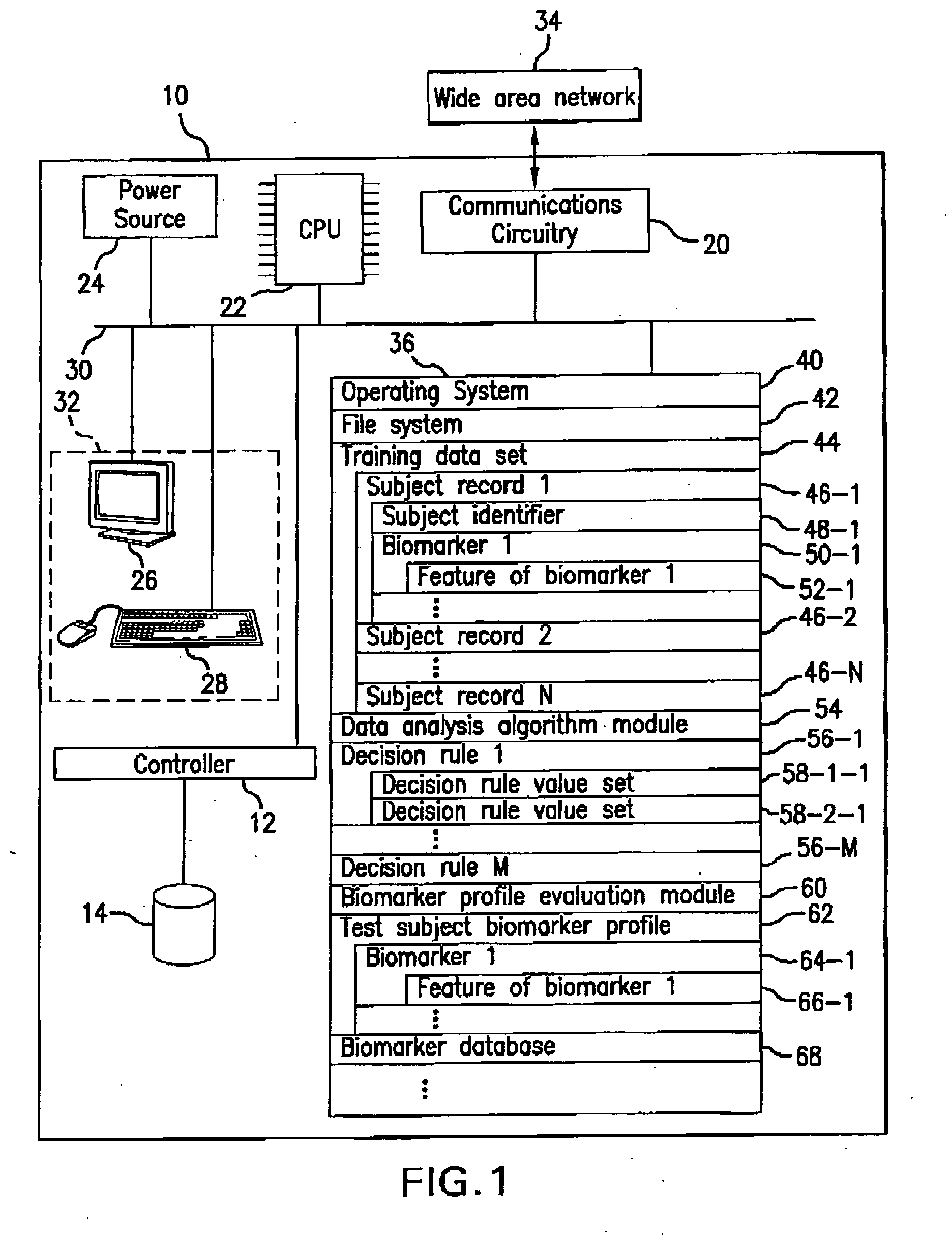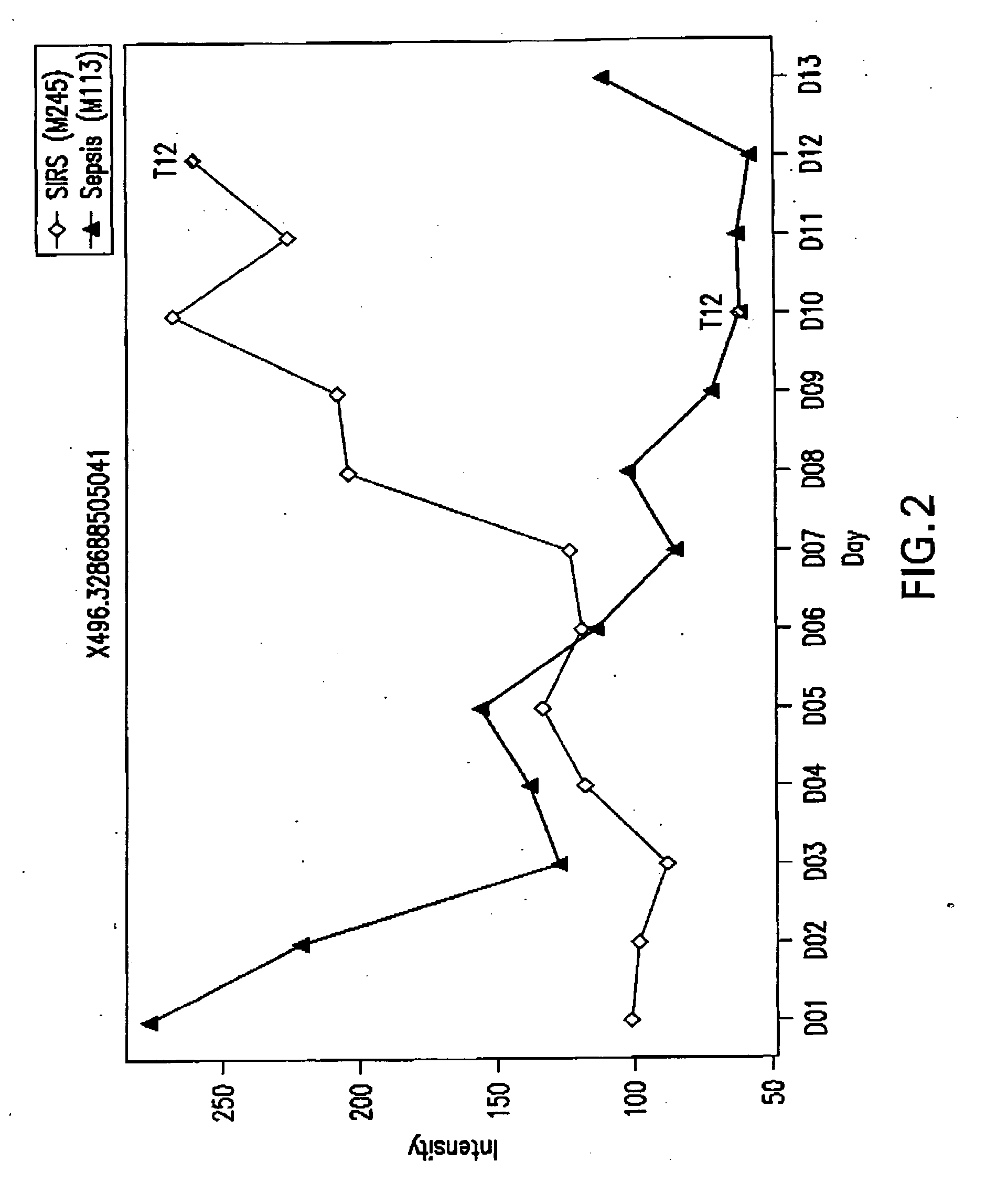Detection of lysophosphatidylcholine for prognosis or diagnosis of a systemic inflammatory condition
a technology of lysophosphatidylcholine and prognosis, which is applied in the field of detection of lysophosphatidylcholine for the diagnosis or prognosis of a systemic inflammatory condition, can solve the problems of difficult detection of early disease symptoms, complex host response during the systemic inflammatory response, and the inability to detect early disease symptoms, so as to reduce the risk of systemic inflammatory conditions and reduce the amount of lysophosphatid
- Summary
- Abstract
- Description
- Claims
- Application Information
AI Technical Summary
Benefits of technology
Problems solved by technology
Method used
Image
Examples
example 1
6.1 Example 1
Analysis of Serum Metabolites of Sepsis and SIRS Patients
[0365] Examples 1 and 2 demonstrate the utility of biomarkers of the invention for the diagnosis and prognosis of sepsis and SIRS. Reference biomarker profiles were established for two populations of patient volunteers.
[0366] Patient Populations
[0367] Patients were divided into two populations. The first population (“the SIRS group”) represents patients who developed SIRS and who entered into the present study at “Day 1” but who did not progress to sepsis during their hospital stay. The second population (“the sepsis group”) represents patients who likewise developed SIRS and entered into the present study at Day 1 but who progressed to sepsis typically at least several days after entering the study.
[0368] Sample Collection
[0369] Blood samples were taken about every 24 hours from each study group. Clinical suspicion of sepsis in the sepsis group occurred at “time 0.” The samples were taken at “time −12 hours”...
example 2
6.2 Example 2
Diagnosis and Prognosis of Sepsis and SIRS with Biomarker 496.3 or Biomarker 518.3 of the Invention
[0374] This Example provides time course studies of biomarkers 496.3 and 518.3 and demonstrates their utility for diagnosis, prognosis and monitoring of sepsis and SIRS. Biomarker 496.3 is 1-O-palmitoyl-2-lyso-sn-glycero-3-phosphocholine, and biomarker 518.3 is the sodium salt of 1-O-palmitoyl-2-lyso-sn-glycero-3-phosphocholine.
[0375] Blood was drawn daily from patients enrolled in this study up to 13 days from the day of entry into ICU as described in Example 1. The relative concentrations of the disclosed metabolite biomarkers in the patent were measured with ESI-MS after cold methanol extraction, also as described in Example 1.
[0376]FIGS. 2 and 3 provide relative concentration changes of biomarkers 496.3 and 518.3 over a period of 13 days for sepsis patient M113 and SIRS patient M245.
[0377] As can be seen in FIG. 2, the concentration of biomarker 496.3 from the SIRS...
example 3
6.3 Example 3
Identification of Biomarkers by MS / MS
[0384] The biomarkers were generally identified by performing tandem MS on the MS peak signals from the plasma samples. The MS / MS peak signals were then assigned to the corresponding fragments from the proposed biomarker. The biomarkers were finally confirmed by MS / MS spectra of commercially purchased compounds.
TABLE 1MS / MS of 496.3 (1-O-palmitoyl-2-lyso-sn-glycero-3-phosphocholine)Ion Peak (Dalton)Assigned Fragments496.34Parent Molecule Ion (MH+)478.33MH+ - H2O313.27MH+ - Phosphorylcholine184.07Phosphorylcholine104.11Choline
[0385]
TABLE 2MS / MS of 524.3 (1-O-stearoyl-2-lyso-sn-glycero-3-phosphocholine)Ion Peak (Dalton)Assigned Fragments524.37Parent Molecule Ion (MH+)506.35MH+ - H2O341.02MH+ - Phosphorylcholine184.07Phosphorylcholine104.11Choline
PUM
| Property | Measurement | Unit |
|---|---|---|
| time | aaaaa | aaaaa |
| time | aaaaa | aaaaa |
| time | aaaaa | aaaaa |
Abstract
Description
Claims
Application Information
 Login to View More
Login to View More - R&D
- Intellectual Property
- Life Sciences
- Materials
- Tech Scout
- Unparalleled Data Quality
- Higher Quality Content
- 60% Fewer Hallucinations
Browse by: Latest US Patents, China's latest patents, Technical Efficacy Thesaurus, Application Domain, Technology Topic, Popular Technical Reports.
© 2025 PatSnap. All rights reserved.Legal|Privacy policy|Modern Slavery Act Transparency Statement|Sitemap|About US| Contact US: help@patsnap.com



